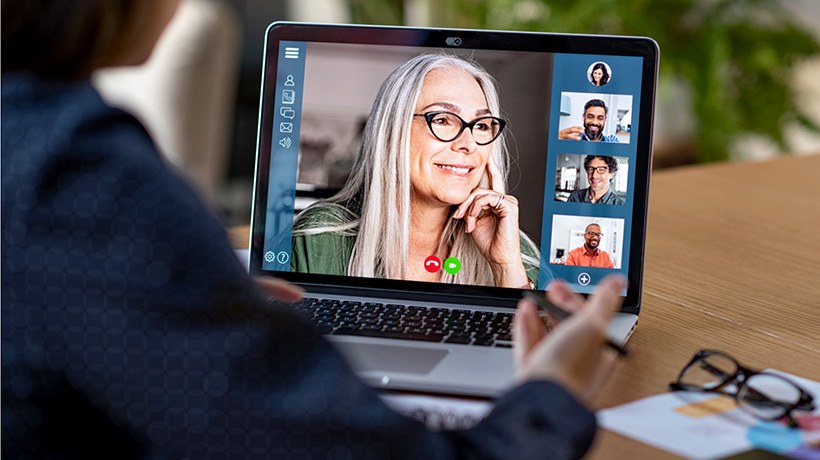What Is The Purpose Of Webinars In Education?
Webinars are the online versions of seminars and are typically performed live. While students are still required to attend school or college in person, webinars are often a requirement, especially in universities. It's a more convenient and relaxed way for both learners and educators to participate, engage with the material and one another, and build a sense of community. However, webinars in education are not meant to replace traditional teachings but to accompany them in the technologically developed society we live in. In this article, we explore 5 benefits of using webinars in education as well as 4 tips for hosting a successful webinar.
5 Benefits Of Implementing Webinars In Education
1. Convenience And Flexibility
A webinar isn't necessarily live since instructors can prerecord themselves and share the link with participants. Or they may record a live session for those who are absent so that they can watch it at a different time. This is particularly convenient for learners with full-time or part-time jobs, remote learners, and those who have families. Faculties can release webinars not only for their students but for anyone who wishes to participate and enrich their knowledge. Thus, anyone with access to a link may join from anywhere in the world, regardless of the time zone.
2. Cost-Effectiveness
First, webinars in education eliminate transportation and accommodation costs that both students and lecturers burden themselves with to attend physical locations. Also, faculties reduce their operational expenses, including electricity and heating. In some cases, seminars take place in rented locations, where extra personnel is hired to assist with seating arrangements and setting up the technology. However, with webinars, none of these expenses are needed since the only necessary equipment is computers with functioning microphones. Lastly, recorded webinars can be reused, saving on additional content creation costs.
3. Interactivity Through Anonymity
In traditional classrooms, many students feel self-conscious and refrain from asking questions, knowing all attention will be on them. However, in webinars, individuals can enjoy their anonymity while participating at their preferred level. Most platforms have live chats, where everyone can ask questions, engage in polls and surveys, and connect with their peers. At the same time, educators gather valuable insights live, answer questions, and solve misunderstandings. Therefore, learners not only clarify information and deepen their understanding but also get to know one another and broaden their network of like-minded individuals.
4. Variety Of Lessons
In some cases, students cannot attend specific classes or lessons because their institution does not offer them or because they have reached maximum capacity. However, when webinars are used in education, the number of participants is often not an issue. This way, learners can participate in classes in different institutions. Being able to take extra courses helps people broaden their skills and knowledge, regardless of the geographical distance. The scalable nature of online seminars allows institutions to reach wider audiences, improving their brand. As a result, they can bring in more talent and increase their profits through paid webinars.
5. Easy Access
Webinars don't require complex software or equipment, although lecturers might indeed need to invest in a high-quality camera and microphone. However, learners only need a smart device of their choice. This includes laptops, tablets, smartphones, and desktop computers. Apart from that, all educators need to do is find a suitable platform and share their webinars with their students. Anyone with a trustworthy internet connection and a compatible browser can enter and watch the material from any location.
How To Host A Successful Webinar
1. Know Your Objectives
Before designing a webinar for education, you must identify your learning objectives so students know what to expect. Having a clear direction helps you organize your material efficiently. The next step is to find the appropriate platform. There are a multitude of factors you need to assess before choosing one. For example, the quality of video and audio, the number of participants, the level of interactivity, and accessibility should be your priorities. You may also want to pay attention to the platform's compatibility, security, and privacy settings. Features, like chat rooms and surveys, are necessary for an effective webinar, but they might come at a higher cost. Carefully examine your choices to make the right decision.
2. Design High-Quality And Engaging Content
Tutors often make the mistake of delivering long and dull lectures that disengage their audiences. To avoid that and make your content engaging, add visual aids, including statistics, images, videos, animations, and interactive elements such as polls and Q&A sessions. Your content should also have a clear structure, with an introduction, a main body, and a conclusion, while you may want to use transitions and summaries for optimal direction. Don't overload your audience with too much information, and try to make your content unique. Take a look at similar webinars to identify what you can do differently and more effectively.
3. Encourage Participation
To implement webinars in education successfully, participants must feel free to share their opinions and be safe from judgment. Lecturers may ask open-ended questions throughout their teaching and allow students to reflect. Encourage learners to use live chats to share their thoughts and questions with instructors and peers. High levels of interaction motivate, bond, and engage individuals in the content. Apart from chats, you may conduct polls, quizzes, and breakout rooms where small groups of people discuss freely. Consequently, peers and tutors offer feedback and create a safe community where ideas are cherished and constructive criticism is allowed.
4. Follow Up And Collect Feedback
Following up after a webinar can happen in various ways. You may send a thank-you email, provide a link to the recorded session, share a summary of the main points, and provide additional resources. However, it may also be useful to ask for participants' individual thoughts through polls and surveys. You can ask them what they enjoyed and what they had trouble conceiving, if they have any suggestions, and whether the pace was okay for them. Based on everyone's insights, you can improve your delivery in the future and explain any misunderstandings or confusing points.
Conclusion
Webinars in education are a wonderful and enriching tool that most students appreciate for their flexibility and convenience. However, they do present challenges that developers and tutors must address before designing their teaching points. For example, people's attention span when staring at a screen is very limited, and they may lose interest quickly. Also, due to technical issues and different time zones, some participants may not be able to attend. So, before venturing into a webinar, ensure that your target audience can attend the event and be prepared to accommodate them if they struggle.









